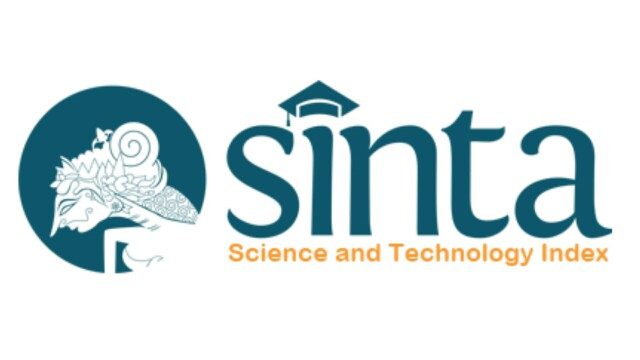Kemampuan Berpikir Kreatif Siswa dalam Memecahkan Masalah HOTS Ditinjau dari Gaya Kognitif
Abstract
Keywords
Full Text:
PDF (Bahasa Indonesia)References
Abdullah, Abdul Halim et al. 2017. Mathematics Teachers’ Level of Knowledge and Practice on the Implementation of Higher-Order Thinking Skills (HOTS). Eurasia Journal of Mathematics, Science and Technology Education 13(1): 3–17.
Aini, A. N. et al. 2020. Creative Thinking Level of Visual-Spatial Students on Geometry HOTS Problems. Journal of Physics: Conference Series 1465(1): 0–6.
Al-Salameh, Emad M. 2011. A Study of Al-Balqa’ Applied University Students Cognitive Style. International Education Studies 4(3): 189–93.
Badjeber, Rafiq, and Wahyuni H Mailili. 2019. Profil Pengetahuan Konseptual Matematis Siswa SMP Ditinjau Dari Gaya Kognitif. ANARGYA: Jurnal Ilmiah Pendidikan Matematika 2(1).
Budiman, A., & Jailani, J. 2014. Pengembangan instrumen asesmen higher order thinking skill (HOTS) pada mata pelajaran matematika SMP kelas VIII semester 1. Jurnal Riset Pendidikan Matematika, 1(2), 139-151.
Ernaningsih, Zeny, and Bella Wicasari. 2017. Analysis of Mathematical Representation , Communication and Connection in Trigonometry. The 2017 International Conference on Research in Education: 45–57.
Heong, Yee Mei et al. 2011. The Level of Marzano Higher Order Thinking Skillsamong Technical Education Students. International Journal of Social Science and Humanity 1(2): 121–25.
Jailani, Jailani, Sugiman Sugiman, and Ezi Apino. 2017. Implementing the Problem-Based Learning in Order to Improve the Students’ HOTS and Characters. Jurnal Riset Pendidikan Matematika 4(2): 247.
Karamaerouz, Mohamad Javad, Ali Abdi, and Soosan Laei. 2013. Learning by Employing Educational Multimedia In. Universal Journal of Educational Research 1 1(4): 298–302.
Listiawati, Enny. 2019. Pemahaman Siswa SMP Perempuan Berkemampuan Rendah Pada Masalah Kalimat Matematika. Jurnal Riset Pendidikan dan Inovasi Pembelajaran Matematika (JRPIPM) 1(2): 64.
Maskur, Ruhban et al. 2020. The Effectiveness of Problem Based Learning and Aptitude Treatment Interaction in Improving Mathematical Creative Thinking Skills on Curriculum 2013. European Journal of Educational Research 9(1): 375–83.
Nugraha, M. G., & Awalliyah, S. 2016. Analisis Gaya Kognitif Field Dependent dan Field Independent terhadap Penguasaan Konsep Fisika Siswa Kelas VII. In Prosiding Seminar Nasional Fisika (E-Journal) (Vol. 5, pp. SNF2016-EER)
US, S. 2012. Peran Berpikir Kreatif Dalam Proses Pembelajaran Matematika. Formatif 2(3): 234914.
Sanders, Sarah. 2016. Critical and Creative Thinkers in Mathematics Classrooms. Journal of Student Engagement: Education Matters 6(1): 19.
Setiawan, Yayan Eryk, Purwanto, I. Nengah Parta, and Sisworo. 2020. Generalization Strategy of Linear Patterns from Field-Dependent Cognitive Style. Journal on Mathematics Education 11(1): 77–94.
Siswono, Tatag Yuli Eko. 2010. Leveling Students ’ Creative Thinking in Solving. IndoMs JME 1(1): 17–40.
Siswono, T. Y. E. 2014. Developing teacher performances to improving students creative thinking capabilities in mathematics. In Proceding International Conference on Research, Implementation, and Education of Mathematics and Sciences, May (pp. 18-20).
Umah, U. 2020. Comparison of Students' Covariational Reasoning Based on Differences in Field-Dependent and Field-Independent Cognitive Style. NUMERICAL: Jurnal Matematika Dan Pendidikan Matematika, 41-54..
Zaiyar, M, and Rusmar, I. 2020. Students ’ Creative Thinking Skill in Solving Higher Order Thinking Skills ( HOTS ) Problems. Al-Jabar: Jurnal Pendidikan Matematika 11(1): 111–20.
DOI: https://doi.org/10.24176/anargya.v3i2.5230
Refbacks
- There are currently no refbacks.
View My Stats
In Collaboration With:
Indexed:

Anargya : Jurnal Ilmiah Pendidikan Matematika is licensed under a Creative Commons Attribution 4.0 International License.
Dedicated to:















